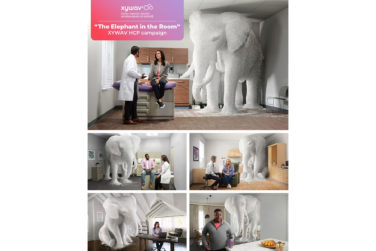In the past, the best way to deliver brand messages to prescribers was obvious: send your army of field-based sales representatives to potential high-volume prescribers and sell, sell, sell. But the marketing landscape is decidedly different in today’s digital era. Throw in pandemic-forced access restrictions, and HCP messaging is far more complicated than in the past. Fortunately, point-of-care (POC) marketing channels provide effective and efficient options. Let’s briefly unpack five core tenets of an HCP-focused POC marketing plan.
1. The EHR is the Holy Grail of POC Messaging (At Least for Now)
Reaching HCPs while they’re prescribing is the epitome of physician messaging. And to do that in today’s digital age, you’ve got to think “EHR.” Why? Because nearly all prescriptions are now written electronically. If you want to capture the eyeballs of HCPs in real time at the moment they select and prescribe a medication, the electronic health record is likely the best game in town.
As the ability to reach HCPs through EHRs has expanded, a new group of messaging providers has sprung to life. These companies establish message-delivery contracts with multiple EHRs/health systems, bundle those contracts to create a multi-EHR network of reachable HCPs, and then offer that message delivery capability to brand teams as part of the marketing strategy. Top-performing vendors can deliver relevant messages at multiple locations and instances within the EHR:
- As prescribers log into the EHR
- While in the patient chart during the patient visit
- While e-prescribing competitive medications
- After generating an e-prescription (including auto-sending a copay offer to the pharmacy)
Importantly, new technology can trigger messages based on elements in the patient chart/summary. When a patient meets predetermined triggering criteria, a brand message appears in the EHR. Messaging triggers:
- ICD-10 diagnostic codes
- Lab orders/results
- Medication history
- Immunizations
- CPT procedure codes
- Vital signs
- Geography
- Doctor’s specialty code
Your path forward as a marketer is to get connected with the messaging provider that best meets two key considerations: 1) they contract with EHRs that provide the broadest coverage of your target HCPs; and 2) they offer the most appropriate mix of messaging solutions for your brand and target HCPs.
2. Expanding Technology Will Continue to Offer New Options
Continuous growth in technology gives marketers an unending stream of more and better ways to get clinical information in front of prescribers. For example, starting in 2015 at Ogilvy, I watched companies that had been using print materials in doctors’ offices begin switching to large electronic tablets in waiting and exams rooms that displayed information for multiple brands. These digital wallboards had a smaller footprint within the doctors’ offices, but delivered the messages with much more dynamic effect. Today, new breakthroughs enable us to message HCPs in the EHR at the point of prescribing, deliver renewal reminders to HCPs within workflow, and much more.
In the years to come, expanding technology will offer more novel POC options. Top-tier marketers will keep their ears to the ground in order to stay fully informed on these new options and deploy those that make sense for their brands.
3. The Point of Care Marketing Association (POCMA) is the Go-to Source for POC Education/Advocacy
Founded in 2013, POCMA supports the POC channel through education and advocacy. This organization offers an array of resources, certifications, educational events, and trainings, all of which can help marketers hone their POC knowledge and skills.
4. The Medical Literature Reports on POC Too; They Call it “Nudging”
It’s not just pharma that’s interested in changing prescriber behavior. An entire academic ecosystem is focused on physician “nudging.” To dip your toe into the nudging pool, start with the University of Pennsylvania Nudge Unit (yes, there is such a thing) at healthcareinnovation.upenn.edu/nudge-unit. The Unit “designs and implements scalable nudges to improve medical decision-making and patient outcomes.”
If you’d rather dive right into the literature, I recommend two excellent articles. First, “Effect of Nudges to Clinicians, Patients, or Both to Increase Statin Prescribing: A Cluster Randomized Clinical Trial,” by Srinath Adusumalli and colleagues in JAMA Cardiology, 2023. This piece serves two purposes: 1) it provides a review of the literature to date; and 2) it reports on an effective nudge intervention. The second is “Systematic Review of Clinician-directed Nudges in Healthcare Contexts,” by Briana Last and colleagues in BMJ Open, 2021. This is a synthesis of the growing research applying nudges in healthcare.
5. This is Not Your Father’s Reach and Frequency Game (Think Omnichannel)
Many pharma marketers partner with their advertising agencies to lead their POC strategy so they can stay on top of new and innovative ideas. Since agencies typically live in the world of reach and frequency advertising, they tend to lean that direction in HCP-focused POC marketing. But POC messaging cannot be pigeonholed into traditional banner-ad metrics.
On the contrary, as pharma companies began to professionalize their POC strategies, they first started with marketing plans and CRM journeys, then moved to multichannel marketing programs. And now the focus is on an omnichannel approach, which includes posters and digital wallboards, back-office TV, geo-targeted digital ads, and more. But this gradual expansion hasn’t always come easy. When a mid-tier pharma company focused in dermatology was looking at implementing a true omnichannel approach, one of my tasks was to build the appropriate picture so senior leadership could see the importance of it.
The truth is point-of-care tactics fit into an omnichannel strategy like a hand in a glove. Top marketers select the POC techniques that make the most sense for their brand, implement them in the right sequence, and measure the impact as part of their ROI due diligence.
Point-of-care HCP marketing has come a long way since leave-behind pens and scratchpads. Advanced solutions—especially real-time in-EHR messaging—have revolutionized the POC landscape. And future solutions will be even more exciting.
Marketers must work closely with their messaging partners to optimize their strategy today—and position themselves to leverage new solutions tomorrow.









